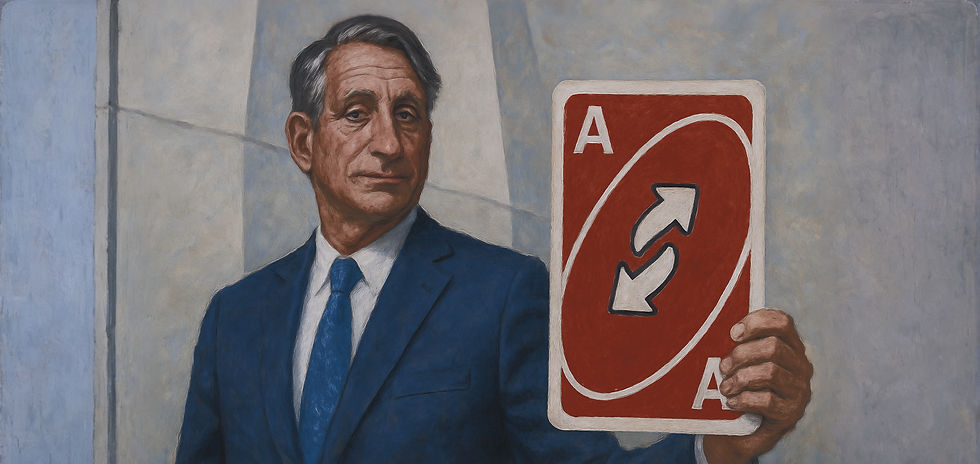

PR WARS
WHEN YOUR "ENEMY" KNOWS YOU BETTER THAN YOU KNOW YOURSELF
Around July 22nd, as Blake Lively and the rest of the cast began promotional appearances for It Ends With Us ahead of its August 6th premiere, public attention quickly turned to Justin Baldoni’s absence. Fans, already deeply engaged with the film due to its powerful message, the book itself and the success of the trailer (which had amassed over 100 million views), were alarmed that Baldoni — both the film’s director and lead actor — was nowhere to be seen in the promotional materials. By July 30th, it was becoming increasingly obvious that Baldoni had been intentionally sidelined from the project.
At the same time, Blake Lively’s marketing campaign, led by her team, began receiving backlash for being tone-deaf — promoting the film more like a romantic drama than the serious, trauma-focused narrative it actually was. In an attempt to suppress the negative press directed at Lively, her PR team tried to shift the narrative. However, Baldoni and his team at Wayfarer Studios were already well-prepared. Knowing that false narratives were likely to emerge, they had been quietly laying the groundwork to ensure nothing defamatory would be pinned on Baldoni — especially because the claims were untrue.
As premiere day approached, rumors began surfacing about behind-the-scenes tensions. Until that point, no official story had acknowledged these rifts. But tensions reached a breaking point behind closed doors, particularly between Melissa Nathan, Baldoni’s crisis publicist, and Leslie Sloane, Lively’s publicist. The two had originally made a quiet truce to prevent escalation. However, that truce was disrupted by Stephanie Jones, founder of JonesWorks and the superior of publicist Jennifer Abel.
Jones, acting without authorization, inserted herself into the PR campaign and independently contacted a reporter — a move that violated protocol. Though she denied the interaction, it was later confirmed by reporters (through Melissa Nathan’s sources) that Jones had indeed spoken to the press. Nathan, well-connected in media circles, was immediately believed over Jones, whose credibility eroded.
When Leslie Sloane heard that someone from Baldoni’s team had allegedly spoken to the Daily Mail, she assumed it was a breach of the truce and retaliated — not realizing it had actually been Jones, not Baldoni’s camp. This misstep triggered a domino effect, further inflaming tensions.
Melissa Nathan later traced the breach back to Jones via connections, confirming it with journalists. This revelation reignited the PR conflict. Meanwhile, backlash against Blake Lively’s marketing choices intensified. Lively and Ryan Reynolds, feeling cornered by the negative attention, began pressuring Baldoni and Wayfarer Studios to release a statement essentially taking responsibility for the film’s off-message promotional tone.
The core of the conflict was that Lively and Reynolds had marketed the film as a romantic drama, while Baldoni had emphasized its message around domestic violence — a fundamental and meaningful distinction. Lively and Reynolds seemed to be looking for a scapegoat. However, Baldoni and his team flatly refused to issue any statement that would imply culpability for decisions that were not theirs in the first place.
More damaging press surrounding Lively’s promotional missteps emerged on August 15th and 16th. Despite efforts to contain it, the media narrative spiraled. As tensions rose, Jennifer Abel and Melissa Nathan found themselves entrenched in a PR war zone, both scrambling to protect their clients’ and movie's reputations.
Eventually, Melissa Nathan once again reached out to Leslie Sloane, explaining point-by-point what had actually transpired behind the scenes. The two appeared to reach a fragile détente. Still, more negative press surrounding Lively’s marketing strategy continued to surface.
Finally, on August 21st, a major shift occurred. Sloane became aware of a deeper rift and took possession of Jennifer Abel’s phone. Within the phone, messages and documents were discovered that reportedly serve as the basis for a lawsuit — a dramatic turn that marked a new chapter in an already chaotic saga.
But what exactly was revealed in those messages? And why would Lively and her team deliver what could only be described as a self-inflicted, career-threatening blow by initiating a lawsuit they knew would expose those very details? They were fully aware of what those texts contained. So why take a gamble with such high-stakes, so recklessly? The answer lies at the heart of my theory, which I unravel in the final part of breakdown.
If you're not familiar with Ryan Reynolds' career, both before and after Deadpool, this is the perfect place to dive in. I explore the parallels between his successful career trajectory and Blake Lively’s, highlighting the similarities in their paths and why I think and believe Blake was aggressively trying to take over It Ends With Us.
Blake Lively seizes power behind the scenes by leveraging her status and making aggressive demands, forcing her way into the editing process, controlling marketing materials, and sidelining both the director and the studio. Through strategic manipulation, she pressures Wayfarer and Sony into conceding to her demands, ensuring her version of the film takes precedence and weakening Baldoni’s role in the project.
Was there a smear campaign? I do a deep dive into the events between July and August 2024, when both PR teams faced a difficult challenge of managing the public image of the film, Lively and Baldoni. This is a very crucial timeline to understand, in order to make sense of what we are all witnessing now.
If you’re already familiar with the intricate details leading up to August 21, 2024, let’s dive straight into the Anita's (my) theory and why I think we are witnessing the unexpected legal drama unfold in front of us; my POV on grave miscalculations of Blake Lively camp and Bryan Freedman's legal strategy, as I have observed it so far.